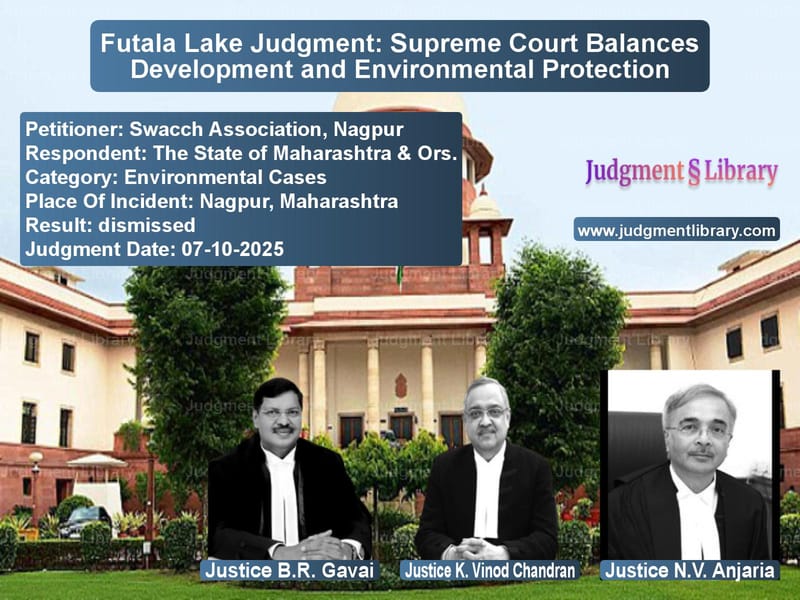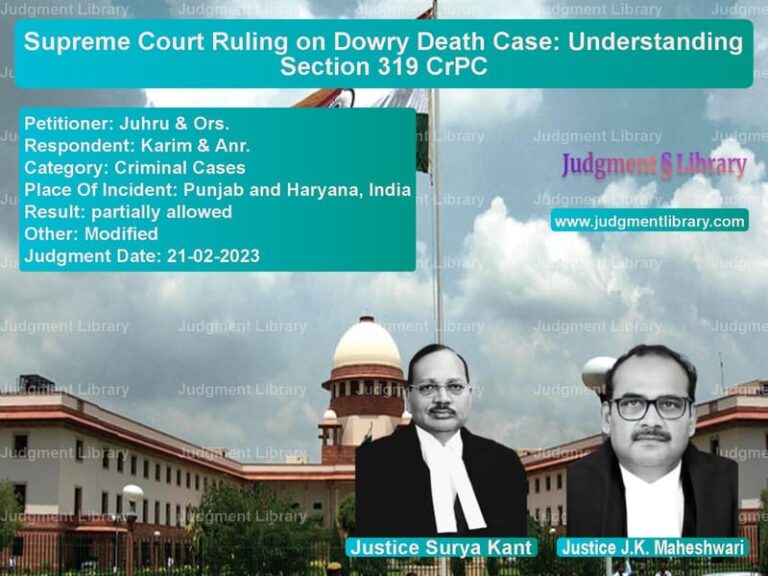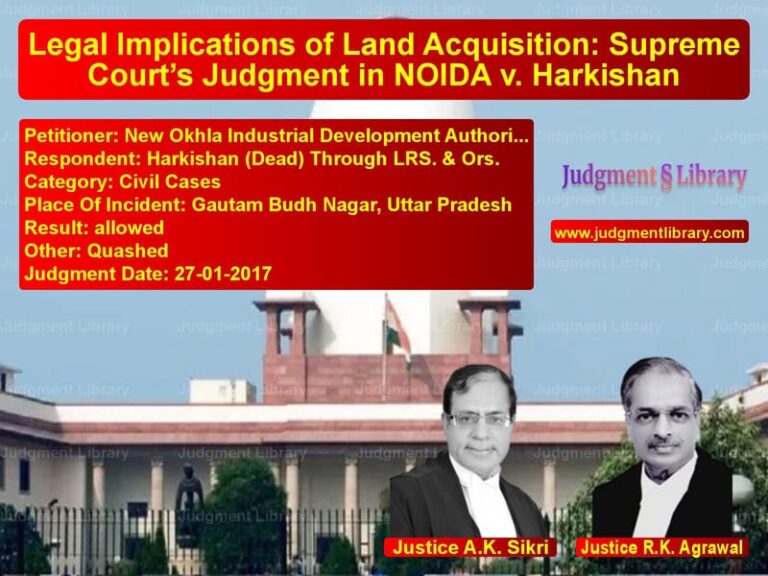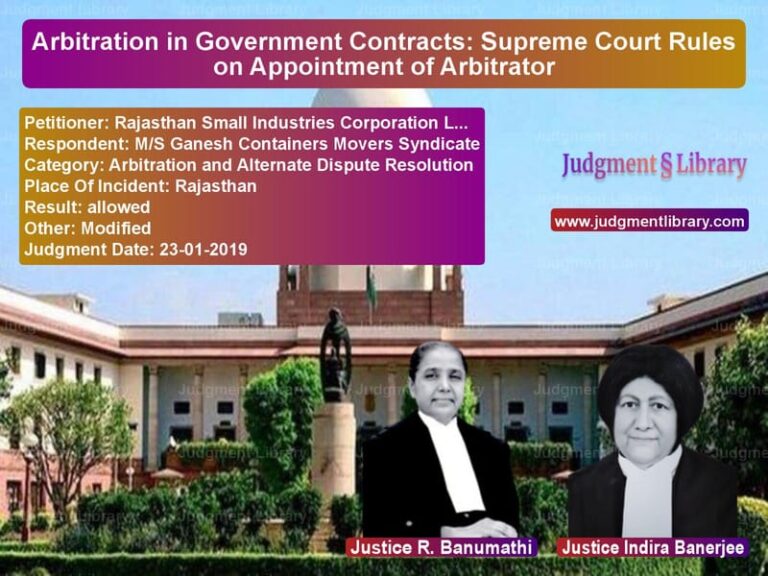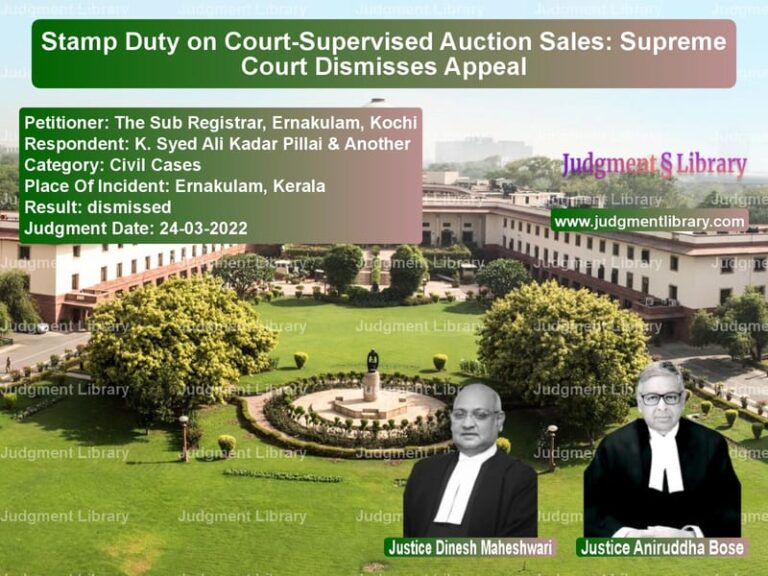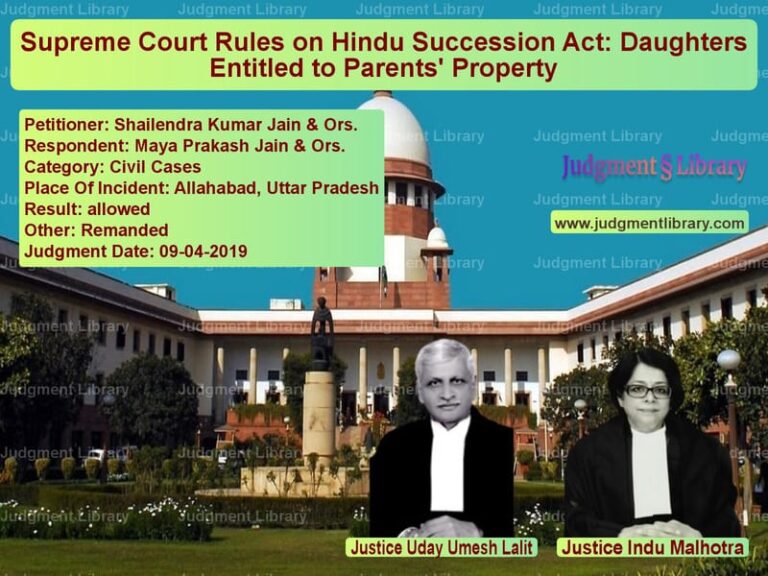Futala Lake Judgment: Supreme Court Balances Development and Environmental Protection
The Supreme Court of India recently delivered a significant judgment addressing the delicate balance between urban development and environmental protection. The case centered around Futala Lake in Nagpur, where various construction projects and recreational facilities had been established, raising concerns about their impact on the waterbody’s ecological health.
The legal battle was initiated by Swacch Association, an organization registered under the Societies Registration Act, 1860 and the Bombay Public Trusts Act, 1950. This environmental group approached the courts with concerns about constructions and recreational activities set up in and around Futala Lake in Nagpur City, Maharashtra. The association claimed to be engaged in green practices and promoting a healthy environment.
The core argument presented by Swacch Association was that Futala Lake qualified as a ‘wetland’ and deserved protection for its environmental value. They contended that the constructions around the lake were permanent in nature and threatened the ecological balance of the area.
The Petitioner’s Arguments
Swacch Association made several specific arguments before the court. They sought declaration that the installation of Musical Fountain and machinery inside the body of Futala Lake was illegal and against the public trust principle. They also prayed to declare that the construction of the Viewer’s Gallery on the bank of Futala Tank was illegal.
The organization further requested directions against Nagpur Metropolitan Regional Development Authority to remove the Musical Fountain and related setup installed inside the lake body and restore the tank to its original state. Additional prayers included directions to Municipal Corporation Nagpur and Maharashtra Metro Rail Corporation to demolish the viewer’s gallery and declare that construction of Parking Plaza on land bearing Khasra No.13/3 at Mauje Futala was contrary to the zone shown in the sanctioned development plan for Nagpur.
The petitioner emphasized that “the Futala Lake was identified as ‘wetland’ in the map of Wetland Atlas of Maharashtra which was part of National Wetland Atlas.” They further claimed that “the Lake is a ‘wetland’ within the meaning of Rule 2(1)(g) of the Wetlands (Conservation & Management) Rules, 2017.”
Swacch Association presented technical evidence, stating that “in the National Wetland Inventory as carried out by Space Application Centre, Ahmedabad under the project ‘National Wetland Inventory and Assessment (NWIA)’ funded by the Ministry of Environment, Forest and Climate Change, Government of India, the Futala Tank was mentioned amongst 2,01,503 wetlands in the inventory list.”
The petitioner argued that not only were wetland protection rules violated, but construction rules and the norm of minimum fifteen meters’ distance for any construction from a waterbody were also disregarded. They particularly highlighted concerns about the artificial Banyan Tree, claiming it represented permanent construction inside the waterbody that caused damage to the lake.
Citing constitutional provisions, the association pleaded that “under Article 21 of the Constitution, right to life has been given an expanded interpretation by this Court to include the right to clean air, clear water, clean environment, hygienic atmosphere and ecological balance.” They also referenced Article 48-A, which lays down the duty of the State to protect environment, and Article 51-A(g), which casts duty on every citizen to protect natural environment.
The appellant then referred to the principle of public trust enunciated by Supreme Court in M.C. Mehta vs. Kamal Nath & Ors., arguing that “the construction of Viewer’s Gallery on the Futala Tank would change the nature of the waterbody as well as its use, to take away its environmental value.”
The Respondents’ Defense
The respondent authorities, including Municipal Corporation Nagpur, Maharashtra Metro Rail Corporation, and Nagpur Metropolitan Regional Development Authority, presented a comprehensive defense backed by documentary evidence.
They demonstrated that competent authorities had granted various permissions for the projects and recreational facilities at Futala Lake in accordance with rules and norms. For the Viewer’s Gallery, plans were submitted on August 29, 2019 and sanctioned by Municipal Corporation Nagpur on October 18, 2019. The Heritage Committee had granted sanction on September 29, 2018, with revised plan sanctioned on June 15, 2021.
Regarding the Parking Plaza, the plan was sanctioned by Town Planning Department, Nagpur Municipal Corporation on September 1, 2022, with Heritage Committee approval. Environmental Management Plan and Dam Stability reports were subsequently submitted, and Heritage Committee again sanctioned the proposal on June 30, 2022.
The Floating Stage-cum-Floating Banquet was permitted as per No Objection Certificates received from multiple authorities including Public Works Department, Commanding Officer HQ Maintenance Command, District Deputy Commissioner of Animal Husbandry, Fisheries Department, Heritage Conservation Committee, Nagpur Municipal Commissioner, and City Police Commissioner.
Similarly, for the artificial Banyan Tree, which was part of Multimedia Show, NOC was obtained from relevant authorities. The respondents clarified that the land bearing Number 13/3 Mauje Futala was not forest land but was occupied by Dr. Panjabrao Deshmukh Agricultural University which used to grow saplings thereon.
Importantly, the respondents emphasized that “the abovementioned permissions and No Objection Certificates granted by the competent authorities concerned, for the recreational facilities and beautification project set up at the place of the Lake, have not been challenged by the public interest litigant-appellant at any stage of the proceedings.”
The authorities also highlighted environmental protection measures undertaken, stating that “compensatory afforestation was carried out in respect of the trees which were required to be removed for executing the directions at certain places.” They claimed that “the Floating Musical Fountain Show resulted into improvement of quality of water in the Futala Tank and its aquatic life is enhanced.”
Court’s Analysis on Key Issues
The Supreme Court conducted a detailed examination of the factual and legal matrix of the case. Regarding the nature of constructions, the court found that the Viewer’s Gallery was constructed on the Bund road adjacent to the precinct of Futala Tank, which did not disturb the existing precinct. It was at a height of 4 metres above dam level, permissible under guidelines, and did not touch the embarkment structure.
Addressing the controversial artificial Banyan Tree, the court noted that respondents had clarified that “the Banyan Tree is to be used as the screen for the 3D show, it is accordingly erected using the Kerb stones weighing 350 tonnes in the total area placed inside the structure so that there is no lateral movement and the wind load is countered.” The structure covered just 0.51% of the total area of the tank.
The court made a crucial observation: “When the Banyan Tree is not embedded on the bed of the lake and when there is no foundational support laid for it inside the tank and when it is removable at any time, this Court is inclined to accept and hold that the erection of Banyan Tree could not be regarded as a permanent structure.”
The central legal issue was whether Futala Tank qualified as a ‘wetland’ under Rule 2(1)(g) of Wetlands (Conservation & Management) Rules, 2017. The court examined the historical background, noting that “the Futala Lake is a man-made waterbody and it does not fall within the meaning of the statutory definition and is not a ‘wetland’ as defined in Rule 2(1)(g) of the 2017 Rules.”
The court elaborated on the statutory definition: “‘wetland’ means an area of marsh, fen peatland, or water; whether natural or artificial, permanent or temporary, with water that is static or flowing, fresh, brackish or last, including areas of marine water the depth of which at low tide does not exceed six meters, but does not include river channels, paddy fields, human-made water bodies/tanks specifically constructed for drinking water purposes and structures specifically constructed for aquaculture, salt production, recreation and irrigation purposes.”
Historical records showed that Futala Tank was constructed in 1799 by Shri Gyanoji Bhosale as a man-made waterbody for drinking water and irrigation purposes, thus falling under the exclusion category in the definition.
Application of Public Trust Doctrine
Despite finding that Futala Lake did not technically qualify as a wetland under the 2017 Rules, the Supreme Court emphasized the importance of environmental protection principles. The court referenced the public trust doctrine propounded in M.C. Mehta vs. Kamal Nath, observing that “The Public Trust Doctrine primarily rests on the principle that certain resources like air, sea, waters and the forests have such a great importance to the people as a whole that it would be wholly unjustified to make them a subject of private ownership.”
The court further elaborated: “The said resources being a gift of nature, they should be made freely available to everyone irrespective of the status in life. The doctrine enjoins upon the Government to protect the resources for the enjoyment of the general public rather than to permit their use for private ownership or commercial purposes.”
In a significant expansion of the doctrine, the court held that “The public trust doctrine need not be limited to the natural bodies such as waterbodies, wetlands, lakes, rivers which are nature’s gifts, but holds true also with respect to the man-made or artificially created waterbodies as well as the things and the objects from nature in order to promote ecology and environment.”
The judgment emphasized that “All those man-made or artificial bodies created from natural resources which contribute to the environment and are eco-friendly in their existence, have to be subject to the doctrine of public trust.”
Court’s Final Ruling and Directions
The Supreme Court ultimately dismissed the appeal, upholding the High Court’s judgment which had refused to grant the prayers made in the petition. However, the court reinforced the importance of environmental protection by reiterating the High Court’s directions.
The court noted that the High Court had directed that “the respondent shall ensure that the spirit of Rule 4(2)(vi) of the 2017 Rules will be respected and structure of any permanent nature within the lake would not be undertaken.” The High Court had further directed respondents to ensure that activities nearby Futala Lake do not lead to any damage to the lake and that the entire waterbed along with recreational and beautification structures are kept clean and properly maintained.
The Supreme Court expressed hope that “this pristine waterbody in the city of Nagpur continues to exist with twin objectives, namely to bring public good for the citizens of the city of Nagpur and also contribute to maintain environment friendliness without causing any ecological damage, both to the waterbody itself as well as to the quality of aqua life.”
The judgment represents a balanced approach to environmental jurisprudence, recognizing both the need for development and recreational spaces for public good, while simultaneously emphasizing the importance of protecting natural resources through the application of fundamental legal principles like the public trust doctrine.
Petitioner Name: Swacch Association, Nagpur.Respondent Name: The State of Maharashtra & Ors..Judgment By: Justice B.R. Gavai, Justice K. Vinod Chandran, Justice N.V. Anjaria.Place Of Incident: Nagpur, Maharashtra.Judgment Date: 07-10-2025.Result: dismissed.
Don’t miss out on the full details! Download the complete judgment in PDF format below and gain valuable insights instantly!
Download Judgment: swacch-association,-vs-the-state-of-maharas-supreme-court-of-india-judgment-dated-07-10-2025.pdf
Directly Download Judgment: Directly download this Judgment
See all petitions in Environmental Cases
See all petitions in Public Interest Litigation
See all petitions in Judgment by B R Gavai
See all petitions in Judgment by K. Vinod Chandran
See all petitions in Judgment by N.V. Anjaria
See all petitions in dismissed
See all petitions in supreme court of India judgments October 2025
See all petitions in 2025 judgments
See all posts in Environmental Cases Category
See all allowed petitions in Environmental Cases Category
See all Dismissed petitions in Environmental Cases Category
See all partially allowed petitions in Environmental Cases Category

